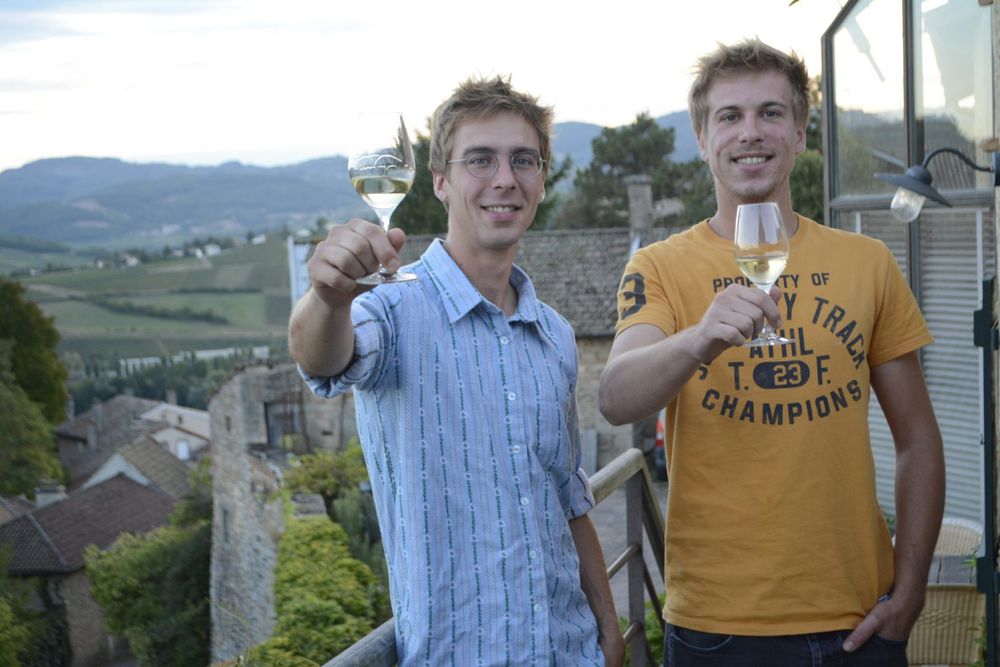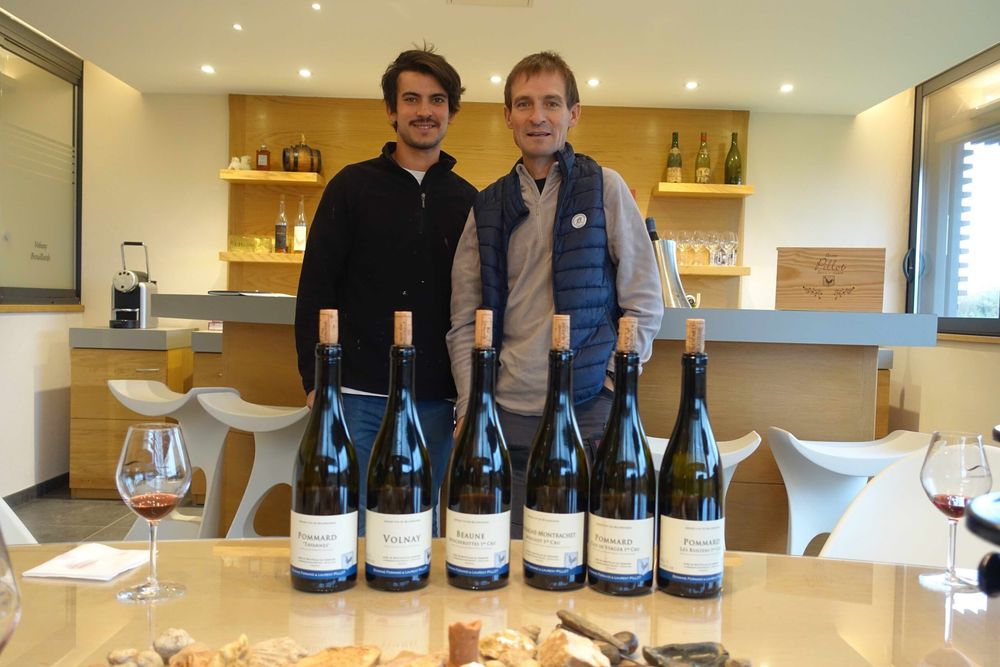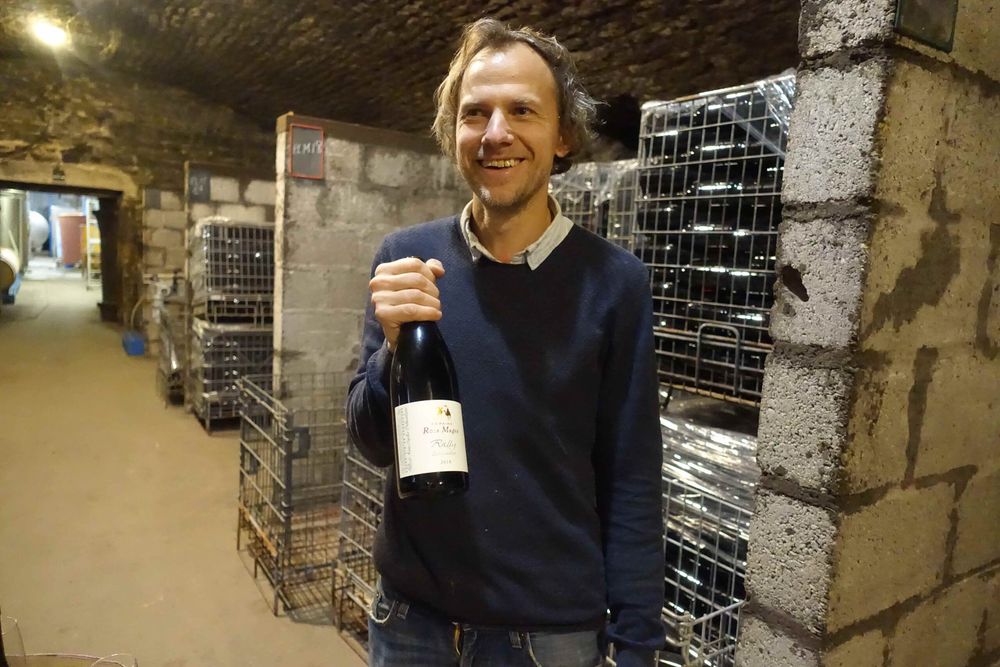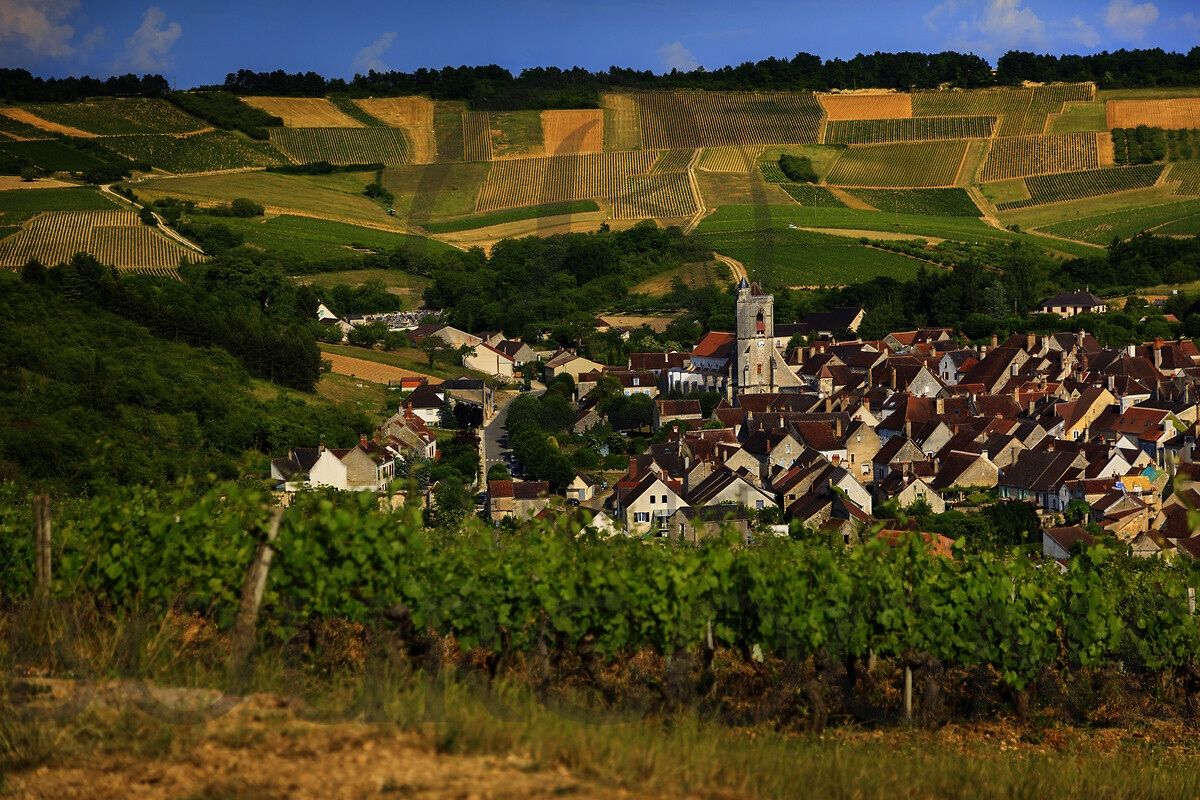The debate around Burgundy and its wines, styles and prices often takes place without producers having their say. Here Sophia Longhi puts that right with this report directly from the region.
Burgundy is never not in demand. It’s a tiny region, which accounts for approximately just 0.3% of the world’s wine production. The trouble is, this production includes the greatest, most prestigious, most famous Pinot Noirs and Chardonnays on Earth. Every top restaurant, every wealthy wine connoisseur wants these wines in their cellars and there is simply never enough.
That’s nothing new. But, what is new is climate change bringing extreme weathers, like hail, frost and drought, threatening supply. In the last four years, Chablis has only had one full grape harvest, which was in 2018. Then there’s Brexit. Coronavirus. The Trump Tax. Billionaires from overseas buying vineyards and threatening to drive prices up and quality down.

Prices are expected to rise even more in Burgundy on the back of the poor 2021 harvest.
Burgundian winemakers are feeling the pressure and wine buyers are feeling the pinch, as, unsurprisingly, prices are rising. In 2008, Clive Coates MW wrote: “Prices have remained remarkably stable, despite increasing demand for the starry wines” in his book The Wines of Burgundy, though last year Wine Lister noted in its 2020 Burgundy Study that more Burgundy wines than ever before cost over £3,000.
But, what are the winemakers saying? Are they concerned that the price rises might mean that Burgundy could become inaccessible for the majority of wine drinkers? Or, as long as they are selling their wines, does that even matter? There’s also the issue of a new generation of wine drinkers coming in: will they have the appetite for expensive Burgundy when there is access to so many great value wines from emerging regions?
Volume is low, demand is high
On a recent trip to Burgundy, I had the opportunity to speak to winemakers at nine different domaines, from the Mâconnais, right up to the Côtes de Nuits. The first thing I learned was that it is ‘Bourgogne’, not Burgundy. According to the Bourgogne Wine Board (BIVB), Burgundy has gone back to its roots and is reclaiming its original name. As the only French region that changed its name for different export markets (‘Burgundy’ for England; ‘Burgund’ for Germany), perhaps Burgundy has given too much of itself to the world and is now not only reclaiming its original name, but also its identity, its history… and its wine?

Vincent Valet of Maison Pierre Bourée et Fils is concerned about the price rises in Burgundy
“I’m concerned about how the average French person can’t buy a bottle Gevrey-Chambertin,” says Vincent Valet of Maison Pierre Bourée et Fils, a domaine founded in Gevrey-Chambertin in 1864. “Wine from Bourgogne is not meant to be a speculative tool. It is meant to be shared. Wine is an emotion, not part of a cheque or a one hundred dollar bill. We are happy to share our wines with as many people as possible, but, please – let’s be civilised about the prices.”
Unfortunately, Maison Pierre Bourée et Fils and other small producers like them, don’t have any control over price rises.
“The prices are up because production is expensive,” explains Cécile Mathiad, head of PR at BIVB. “Volume is low and demand is high: we are losing crops every year. The cost of materials is going up, too.”
To cover what they lost in 2021, there is no way around the fact that Burgundy prices will be higher in 2022. However, the hope is that they will stabilise. For François Berthenet of Domaine Berthenet in the Côte Chalonnaise, production was down 70% this year, so he says that he has no choice but to raise his prices a little, but hopes it will be better next year.
For larger producers, it isn’t such an immediate worry: “For now, there isn’t a problem with Bourgogne,” says Lauréne Boss of Maison Joseph Drouhin in Beaune, “but there will be if the price keeps going up.”
Mathiad says more money is being invested into researching production problems: they are looking at drought and rain resistant rootstocks, new methods in the vineyards, such as pruning later (“the April frost is not new, but early budburst is”) and even different clones of the four permitted varieties, Pinot Noir, Chardonnay, Gamay and Aligoté. She also looks towards the new generation of winemakers in Burgundy, who she describes as having a “magic cauldron of ideas”.
The freedom to experiment

Paul and Théo Merlin of Domaine Merlin are willing to lose the Burgundy appellation status in order to experiment with different wine styles
Two from this new generation of Burgundy winemakers are brothers, Théo and Paul Merlin, of Domaine Merlin (formerly Domaine du Vieux Sorlin). Based in the Mâconnais, in the village of La Roche-Vineuse, the brothers don’t seem too worried about the future of Burgundy, as they are confident that they can adapt to whatever is thrown at them.
Having travelled widely, working in wineries in Napa, Australia and Brazil, Théo and Paul have taken inspiration from the New World, when it comes to using different grape varieties and planting techniques.
Although they are much more restricted in Burgundy when it comes to permitted grape varieties, the brothers are prepared to lose the appellation status for some of their wines in order to have the freedom to experiment. They are also part of a vibrant community who share ideas and solutions with one another: “There’s lots of diversity in techniques,” says Paul. “Lots more people are interested in organics and biodynamics.”
Their father, Olivier Merlin, who bought the domaine in the late eighties, has always been environmentally-conscious, using no chemicals and working by hand without any mechanisation. The health of the grapes is paramount and is the reason they don’t use a harvesting machine, which de-stems the grapes and causes slight oxidisation. Ten to 15 people plough the vines by hand, as Paul and Théo don’t believe a tractor can get close enough to the vines.
Perhaps there is more room to be curious and experiment down in the Mâconnais, as opposed to the more traditional Côte d’Or?
“People usually think about Pinot Noir and Chardonnay from the Côte d’Or when they think of Bourgogne,” says Théo. “Our parents wanted a Côte d’Or style but with a Mâconnais terroir. But, we have moved more towards freshness: we harvest earlier to keep the acidity, we use less oak and we have two cuvées in stainless steel, when, traditionally, barrels are used.”
South Bourgogne’s potential
At Domaine Saumaize-Michelin in Vergisson, Lisa Saumaize would agree that things can be a little more flexible in the southern part of Burgundy: “The north is more traditional. South Bourgogne is newer generation and the wines are more accessible and affordable here.”

Marcel Couturier says it is vital Burgundy remains true to its principles and becomes too “elite”. Picture via Bourgogne Wineblog.
In other parts of the Mâconnais, there is even an air of rebellion. “We are completely against the elitism in some parts of Bourgogne,” says Marcel Couturier of Domaine Marcel Couturier in Pouilly-Loché. “Bourgogne needs to stay as humanised as possible.”
The Couturiers see themselves as disruptors in Bourgogne, who make wines “with heart and soul” for themselves, first and foremost, then go out and try and find people who like their wines. One of their wines even has an upside wine label. When asked why that is, Couturier replies: “There is ordinary and then there is us.”
Working with the environment
Three of the southern Burgundy producers I met – Domaine Merlin, Domaine Marcel Couturier and Domaine Saumaize-Michelin – all work organically, but this isn’t exclusive to the south. Adrien Pillot and his father, Laurent, are also working in a minimal intervention way in their Côte de Beaune vineyards at Domaine Fernand et Laurent Pillot, for their own health, as well as for the health of the grapes: “I am the man who sprays, but I am also the man in the vineyard the day after, breathing it in,” says Adrien.

The Pillots – Laurent and his son Adrien – are experimenting with wild yeasts, biodynamics and looking to drive quality in different ways
Though the Pillots have inherited a domaine that goes back to the 17th century, they are very relaxed and grounded people, who aren’t afraid to try new things. Adrien is experimenting with wild yeasts, working with the moon when bottling, planting trees and crops to encourage biodiversity in the vineyards and going back to his grandfather’s way of pruning. He is part of a young, energetic community of winemakers, who exchange ideas and blind taste each other’s wines. Adrien says that “the positive competition drives up the quality of the whole region”.
Value for money
While they have been able to keep their prices low for many years, the Pillots say that the cost of everything has gone up this year, so the prices will have to, but it will not force them to cut corners on quality: “Some producers are bottling earlier, but we don’t want to,” says Adrien. “You have the pressure, but I do not care,” agrees Laurent, though they admit that they “will be OK with the Chassagne name on the label”.
Producers from less famous regions will have to work harder to get their wines out there, but there is plenty of value to be found when you come across them. As consumers, why aren’t we looking further south, outside of the Côte d’Or when it comes to buying our Burgundy? Domaine Saumaize-Michelin have been selling their Pouilly-Fuissé and Saint-Véran wines to the UK market for over 40 years and the wines are still incredible value for money (you can find their signature Pouilly-Fuissé for under £30 at a wide selection of wine merchants).
There are even more gems to be found in the smaller village appellations, such as Pouilly-Loché (the smallest village appellation is southern Burgundy), where Domaine Marcel Couturier make their wines.
Like many of the young winemakers in Burgundy, François Berthenet of Domaine Berthenet has expanded the range to offer customers a wider selection, giving them the option of affordable but excellent quality entry level wines. “Everyone is chasing the Grand Crus,” says Berthenet, “but you should judge a winery on their entry level wine.”

Félix Debavelaere of Domaine des Rois Mages is looking to get more buyers to look at wines from Rully using social media
“People just drink what they know,” says Félix Debavelaere of Domaine des Rois Mages in Rully. As the 2020 winner of the Young Talent winemaking award, he wants to push Rully wines into the spotlight, and one way he does this is though social media via his Instagram page.
There seems to be a shared point of view that communication is key to get the message of value across. Lauréne Boss of Maison Joseph Drouhin says that this is something the new generation in Burgundy must embrace. “There are great quality Bourgogne wines in all price categories,” says Lauréne, “and social media will help to create this conversation. In 10 years Burgundy has changed a lot – it was a very closed place before. That is the biggest difference in generations – communication.”
Seeking out smaller producers
Better online communication will help consumers around the world make informed choices when buying their Burgundy, but on the ground, domaines are looking at creating hospitality offerings to get customers drinking their wines.
The “table d’hote” at Maison Pierre Bourée et Fils is one way that Vincent Valet can keep the average French person drinking Gevrey-Chambertin. “At our table d’hote across the road, people can enjoy our wines by the glass.”

Julien Cruchandeau is determined to keep his prices in line with what his loyal customers can afford
Even though prices will rise across Burgundy in 2022, some new, small producers can’t risk putting up their prices for fear that they will lose their early customers. First generation Burgundy winemaker, Julien Cruchandeau of Domaine Cruchandeau in Bouzeron, says although “being a small producer gives you freedom to diversify, I would prefer not to raise my prices because my customers won’t like it and it’s not good for my business”.
It seems that if Burgundy winemakers have little choice to raise or not raise prices in 2022, it is up to the consumer to exercise their choice when it comes to buying Burgundy. Seek out small producers, look at less famous villages in the Mâconnais and the Côte Chalonnaise and if you’re in France, have lunch at a domaine’s table d’hote. We also have a say in helping to shape the future of Burgundy by supporting the winemakers.
“For me, I would love for Burgundy to continue to be a place for vinegrowers,” says Laurent Pillot. “We are people of the terroir, working like farmers. Burgundy is a place of small producers, people who can drive a tractor one day and work with barrels another day. We don’t want a day when we will only be suits and ties.”
Adrien Pillot adds: “My generation, we are working together to increase the quality. We want to keep our vineyards. We cannot stop the rich people coming to our village, but we can slow it down.”
It looks like Burgundy – or Bourgogne – seems to be going back to its roots in more ways than one.
- To find out more about what the BIVB is doing to promote the region and details on the upcoming Bourgogne Week in January go to the Vins de Bourgogne website here.
- You can follow Sophia Longhi on social media at @skinandpulp.










































